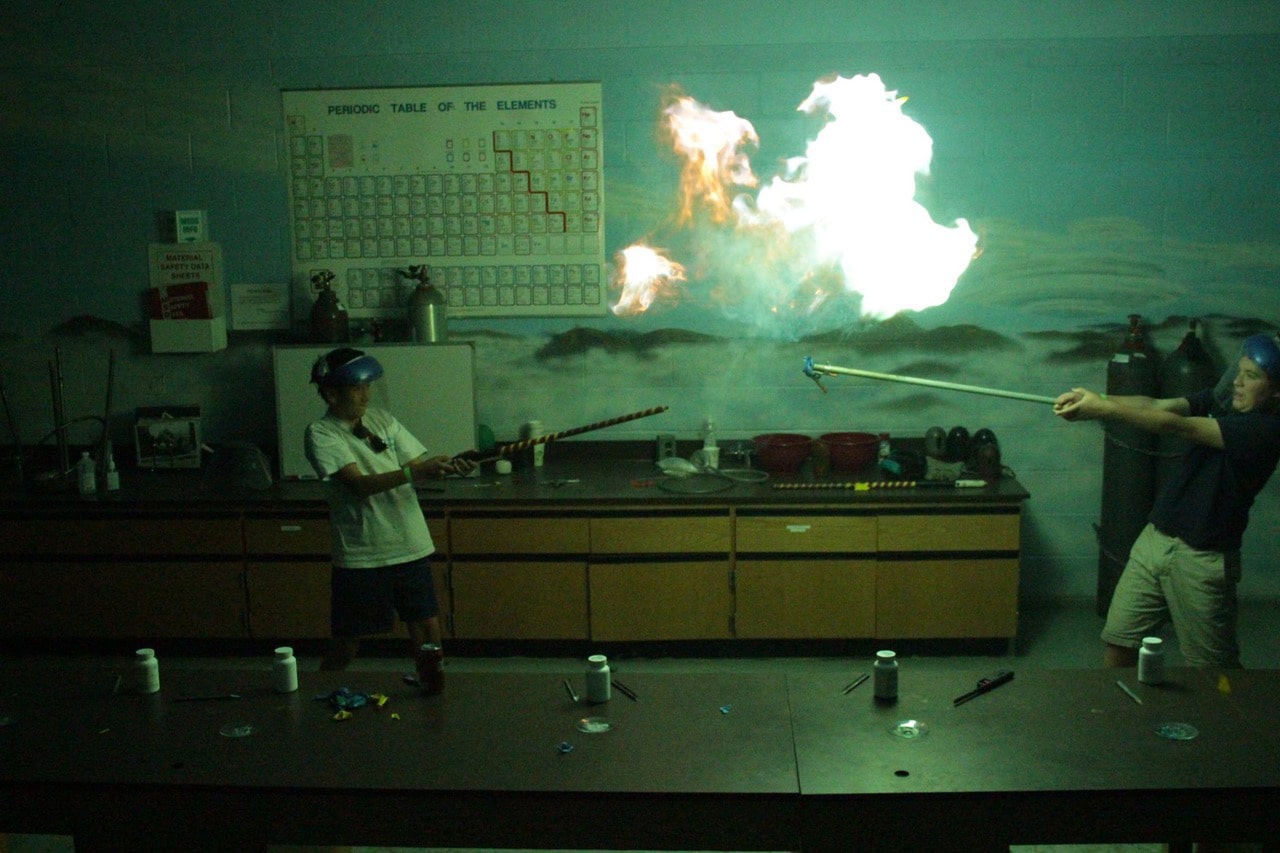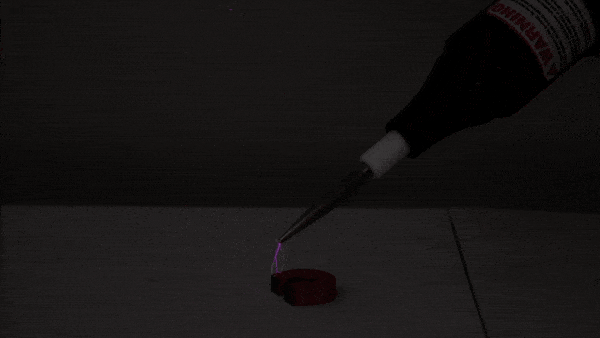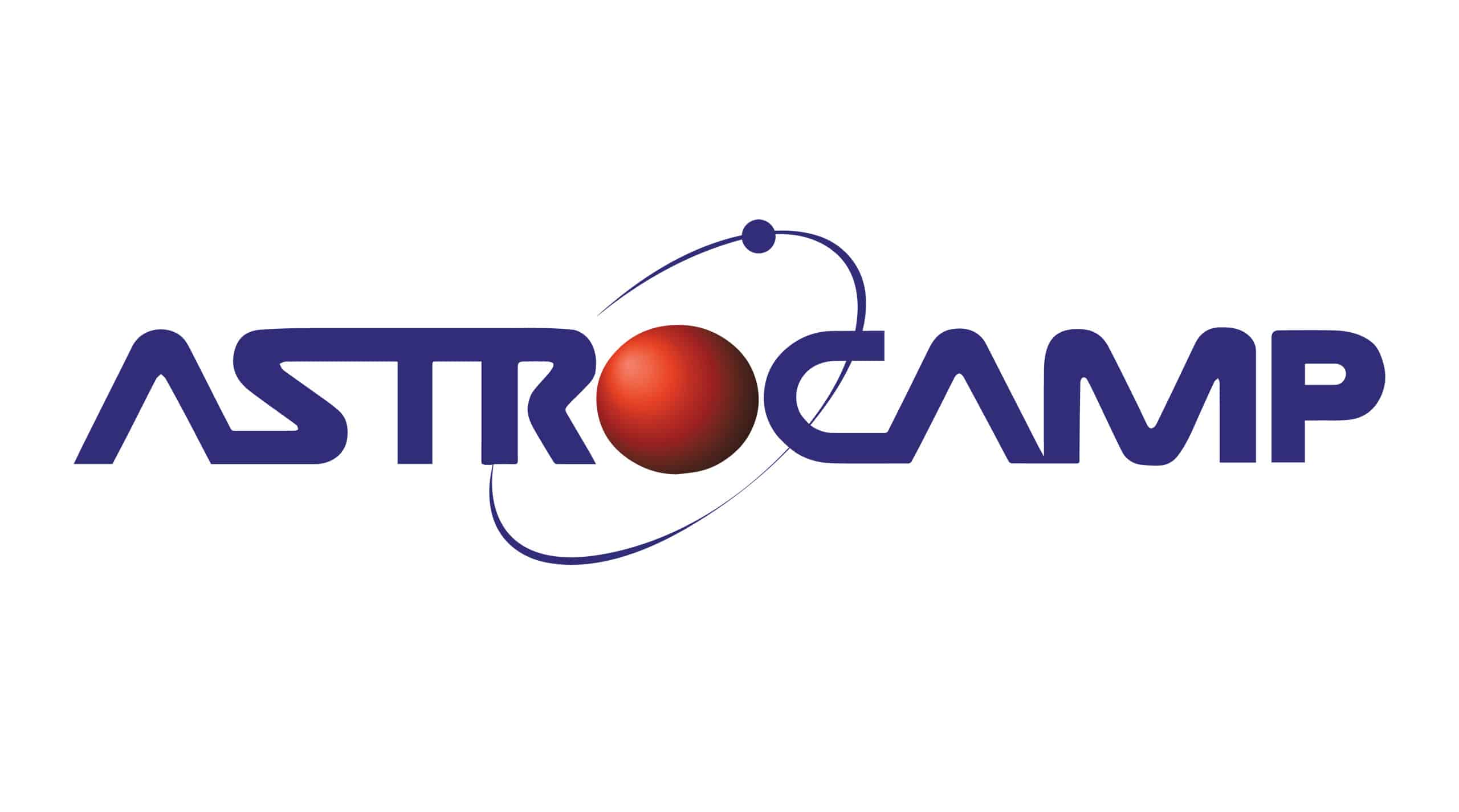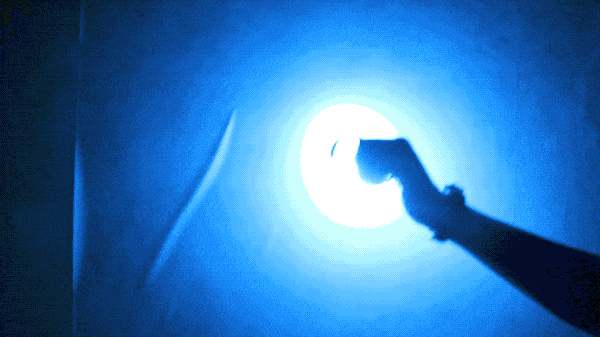
Atmosphere and Gases is one of our most popular activities we offer at AstroCamp! Gases (including the atmosphere around us) can serve as a great vehicle to explore a variety of scientific concepts in exciting and novel ways. This activity is full of science supplies that create an experience you can’t find in most school classrooms, or create at home.
The Case of the Mysterious Gases: The 3 Balloons
There are three balloons, each filled with a different gas. One is nitrogen, one is helium and one is hydrogen. Without knowing which is which, we can conduct a couple different experiments that lets us gain information to determine which gas is in which balloon. But before performing the experiments, we need to know a few things about these gases.
Most of us have seen a Periodic Table of Elements like this one before and while it may seem daunting, it is fairly easy to read. For our purposes, there are only a few things about it that you need to know.
- Find what nitrogen, helium, and hydrogen have in common. If you are looking at this periodic table you might notice that these elements are all written in the same color; red. In fact, all of the elements that exist as a gas at room temperature are written in red.
- It is important to know that our atmosphere, that is the air we breathe, is made up of about 78% nitrogen gas, 21% oxygen gas, and a trace amount of other gases making up the last 1%.
- We need to look at the atomic weight of each of our gases in the balloons and compare them to the atomic weights of the atmospheric gases. The atomic weight of each element can be found in the upper righthand corner of the elements box. For the most part, the periodic table has the elements organized in ascending weight from left to right and top to bottom.
- You will need to determine how likely our gases are to react to the oxygen in the atmosphere when introduced to a catalyst, or something that speeds up a reaction. You can find this information by looking at which column each gas is in. Column 1 and 17 are the most reactive. 2 and 16 are second most, 3 and 15 are third, and so on and so forth. But column 18 consists of the Noble Gases, which are extremely stable, and non-reactive.
WARNING: DO NOT ATTEMPT THIS AT HOME. AstroCamp has a fireproof room and uses the appropriate safety equipment when performing this experiment.
Experiment 1: The Float Test
Now that we have all of that information down, we can use two experiments to isolate which gas is which. First, let’s do a float test. Hydrogen and helium are the two lightest elements, and therefore should float in our atmosphere. Nitrogen is the gas that our atmosphere is mostly made of and therefore should either be neutrally buoyant, or sink in the air. So from experiment #1 we can determine which balloon has nitrogen in it.
Experiment 2: The Fire Test
All that is left to do is determine which of our floating balloons has hydrogen in it and which has helium. Helium is one of the Noble Gases and should not reacts when in the presence of a catalyst. However, hydrogen is extremely reactive with oxygen, which is why H2O or water is so readily available. So now we need a catalyst. Let’s use fire! It is now extremely easy to tell the difference between helium and hydrogen. When the fire touches the balloon with helium in it, it will pop but not cause a chemical reaction. In contrast, when the fire touches the balloon with hydrogen in it, it will cause an explosion! The explosion is evidence of a chemical reaction occurring. Were you able to solve the mystery of these gases?
More About AstroCamp
Atmosphere and Gases is a valuable chance to interact with the world and make a connection to concepts they’ll see everyday, in a dramatic and memorable format that they’ll carry with them. Atmosphere and Gases is a favorite that we love offering during both school year and summer, so check out our Dates and Rates or inquire about visiting with your school!


